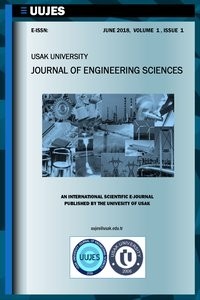COMPARISON OF CLASSIFIERS FOR THE RISK OF OBESITY PREDICTION AMONG HIGH SCHOOL STUDENTS
COMPARISON OF CLASSIFIERS FOR THE RISK OF OBESITY PREDICTION AMONG HIGH SCHOOL STUDENTS
Obesity, which negatively affects human health, is a chronic disease due to genetic and living conditions. In this study, it was aimed to examine the observations with three main techniques: logistic regression, artificial neural networks and Naive Bayes, where the response variable was two categories of obese/not obese. Obesity questionnaire data, that was answered by 504 senior students in three randomly selected high schools in Gaziemir, Izmir, were analysed, and the predictive competences of the results of the three methods were evaluated. It was found that obesity is affected by the mother and father’s being obese and eating too much fruit. In addition, gender and diet status were significantly related with the obesity risk. In the artificial neural network, backward propagation learning algorithm was used as the learning rule in the adjustment of the connection weights according to the output. With the Naive Bayes method, a classification based on the probability values of the data was performed. The logistic regression model coefficient values were determined, using the maximum likelihood method. According to obesity questionnaire data, it was determined whether the relationship of each obesity risk factor with the response variable was statistically significant. The Naive Bayes method has the highest accuracy in prediction obesity compared to the other two methods.
___
- 1. Aswathikutty, A., Marcenes, W., Stansfeld, S. A., & Bernabé, E. (2017). Obesity, physical activity and traumatic dental injuries in adolescents from East London. Dental traumatology, 33(2), 137-142.
- 2. Bookman, J. S., Schwarzkopf, R., Rathod, P., Iorio, R., & Deshmukh, A. J. (2018). Obesity: the modifiable risk factor in total joint arthroplasty. Orthopedic Clinics of North America.
- 3. Cirulli, E. T., Guo, L., Swisher, C. L., Shah, N., Huang, L., Napier, L. A., ... & Venter, J. C. (2018). Profound perturbation of the human metabolome by obesity. bioRxiv, 298224.
- 4. Cui, S., Zhao, L., Wang, Y., Dong, Q., Ma, J., Wang, Y., ... & Ma, X. (2018). Using Naive Bayes Classifier to predict osteonecrosis of the femoral head with cannulated screw fixation. Injury, 49(10), 1865-1870.
- 5. Efe A. (2012). Evaluation of obesity risk factors using logistic regression and artificial neural networks. Dokuz Eylül University, Master Thesis in Statistics.
- 6. Elmas Ç. (2003). Yapay Sinir Ağları. Seçkin Yayıncılık.
- 7. Ferenci, T., & Kovács, L. (2018). Predicting body fat percentage from anthropometric and laboratory measurements using artificial neural networks. Applied Soft Computing, 67, 834-839.
- 8. Hastie T., Tibshirani R. & Friedman J. (2008). The Elements of Statistical Learning. Second Edition. NY: Springer.
- 9. Hosmer D. & Lemeshow S. (1989). Applied logistic regression. NY: John Wiley&Sons.
- 10. Marques CDF., Silva RCR., Machado MEC., de Santana MLP., Cairo RCA., de Jesus Pinto E., et al.(2013). The prevalence of overweight and obesity in adolescents in Bahia, Brazil. Nutricion Hospitalaria, 28(2): 491-496.
- 11. Mbakwa, C. A., Hermes, G. D., Penders, J., Savelkoul, P. H., Thijs, C., Dagnelie, P. C.& Arts, I. C. (2018). Gut Microbiota and Body Weight in School‐Aged Children: The KOALA Birth Cohort Study. Obesity.
- 12. Orphanou, K., Dagliati, A., Sacchi, L., Stassopoulou, A., Keravnou, E., & Bellazzi, R. (2018). Incorporating repeating temporal association rules in Naïve Bayes classifiers for coronary heart disease diagnosis. Journal of biomedical informatics, 81, 74-82.
- 13. Sperandei, S. (2014). Understanding logistic regression analysis. Biochemia medica: Biochemia medica, 24(1), 12-18.
- 14. Wang, H., & Zhang, Y. (2016). Detection of motor imagery EEG signals employing Naïve Bayes based learning process. Measurement, 86, 148-158.
- 15. Yıldırım S. & Uskun E. (2018). Risk factors affecting obesity development in high school students: a community based case-control study. Türk Pediatri Ars; 53(3): 155-62.
- 16. Zhang, H., Cao, Z. X., Li, M., Li, Y. Z., & Peng, C. (2016). Novel naive Bayes classification models for predicting the carcinogenicity of chemicals. Food and Chemical Toxicology, 97, 141-149.
- Başlangıç: 2018
- Yayıncı: Uşak Üniversitesi
Sayıdaki Diğer Makaleler
INVESTIGATION OF THE WATER ABSORPTION PROPERTIES OF PULTRUDED HYBRID COMPOSITE PROFILES
EVALUATION OF FATIGUE PARAMETERS ON POLYMER MODIFIED BITUMENS
Mg/Zn COMPOSITES PRODUCED BY MECHANICAL ALLOYING AND HOT PRESSING AND IN-VITRO BIODEGRADATION
Simay ERDİBİL, Serap CESUR, Rasim İPEK
Babatunde BOLASODUN, Ademola AGBELEYE, Richard DAY
COMPARISON OF CLASSIFIERS FOR THE RISK OF OBESITY PREDICTION AMONG HIGH SCHOOL STUDENTS
Emel KURUOĞLU KANDEMİR, Çağın KANDEMİR ÇAVAŞ, Ayça EFE
NUMERICAL SOLUTION TECHNIQUES FOR CURRENT AND VOLTAGE VARIABLES IN ELECTRICAL (RLC) CIRCUITS
